Thomas Demand: artificiality, nature and Azzedine Alaïa
At Sprüth Magers London, German sculptor and photographer Thomas Demand explores the tensions between artificiality and nature, and steps inside the atelier of legendary Tunisian couturier Azzedine Alaïa
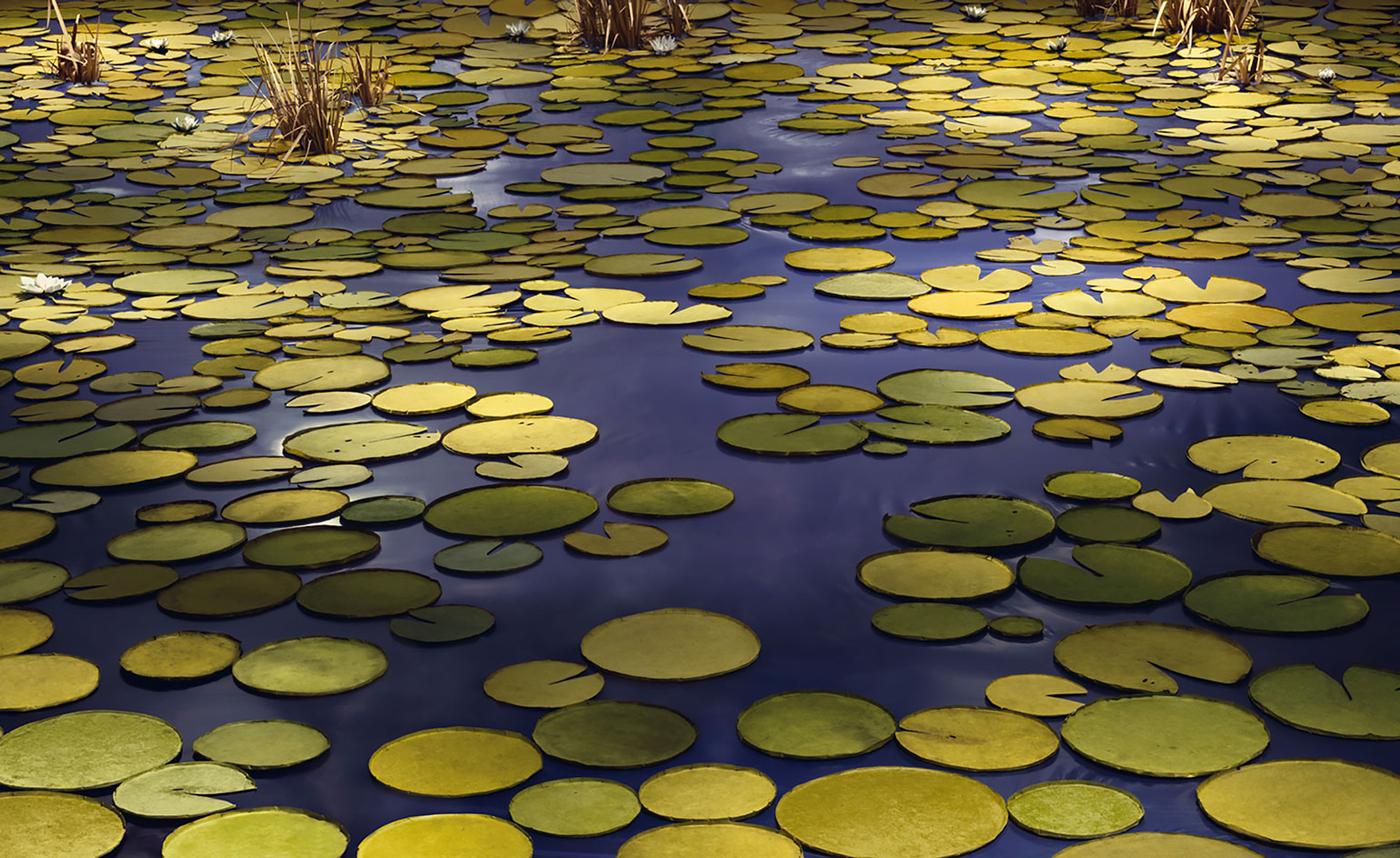
Thomas Demand’s exhibition at Sprüth Magers begins before you enter the door. Thanks to the gallery’s vast frontal bay window, the artist’s Pond becomes almost a public work of art, presenting a dose of tranquillity for all who pass by, and a temptation to uncover more.
‘I think we still operate with an idea of beauty in nature, which is inevitably not what nature out there is, or can be, as we have realised that what nature gives us is not enough,’ says the German sculptor and photographer. ‘So the echo of an idyllic image may be still accessible for us (like the water lilies), but it will be over-imposed eventually by another beauty, the one of nutrition, artificial light and indoor farming. The interesting question here for me is what the notion of nature is.’
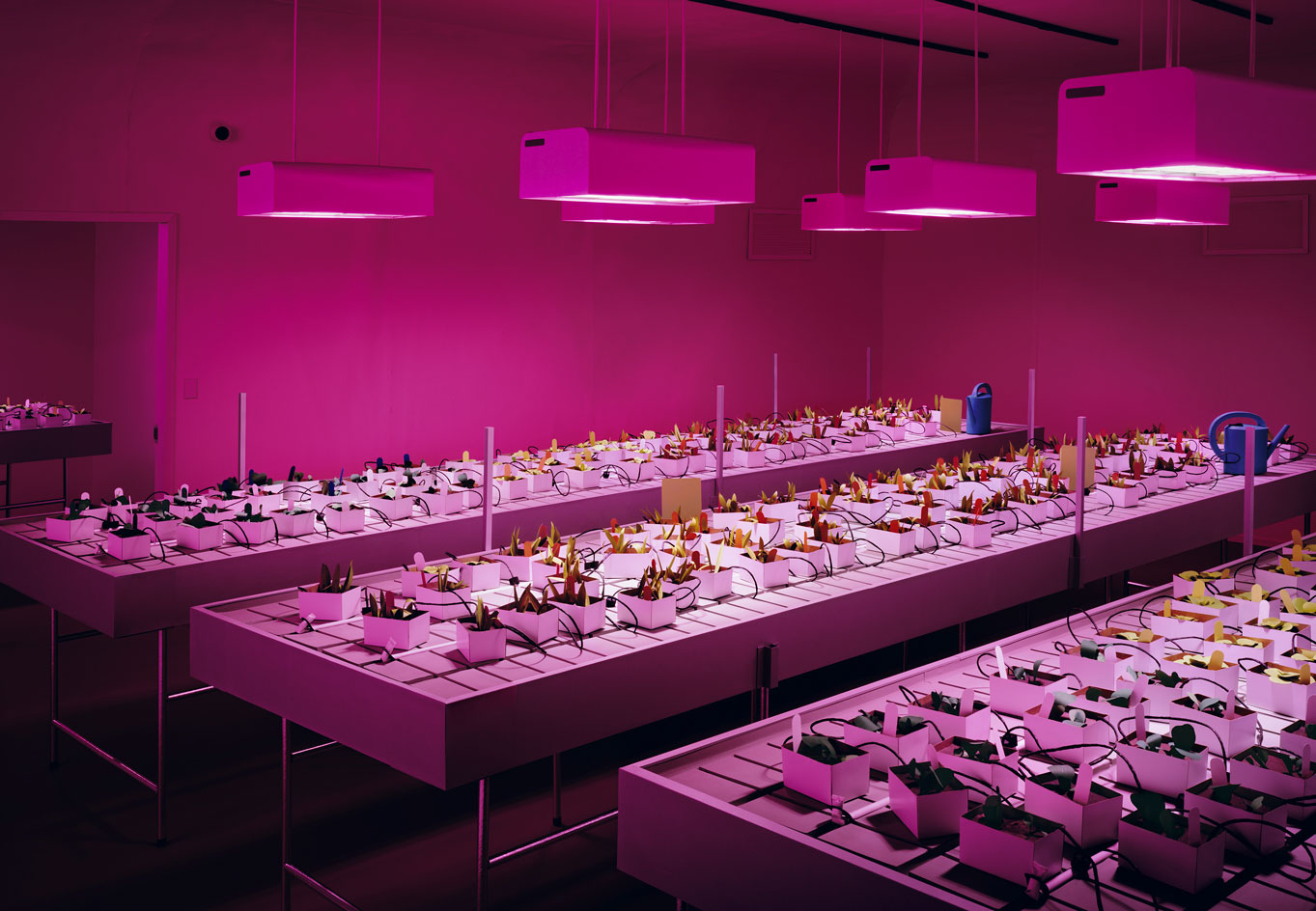
Thomas Demand, Nursery, 2020 C-print/Diasec.
Demand is best known for the enigmatic photographing of meticulously constructed three-dimensional models of rooms, spaces or structures, which he then destroys. This illusion of reality, only exposed as fantasy on intense close inspection, presents the idea of nature as entirely artificial.
Delving deeper into this tension between artificiality and nature, Demand's fourth exhibition at Sprüth Magers features new, imposing large-format photographic works. His Nursery sees a row of pink lights heavily illuminating long tables of intriguing horticultural specimens. The colours are abrasive, the composition dystopian. It’s reminiscent of a crime scene, but Demand’s meticulous construction depicts a legally compliant cannabis lab in Ontario, illustrating the future of farming. The photographer’s piece simultaneously nods to the nefarious past and present of cannabis production and explores how the industry has taken advantage of new government legislation and technology to transform into a multi-billion dollar business.
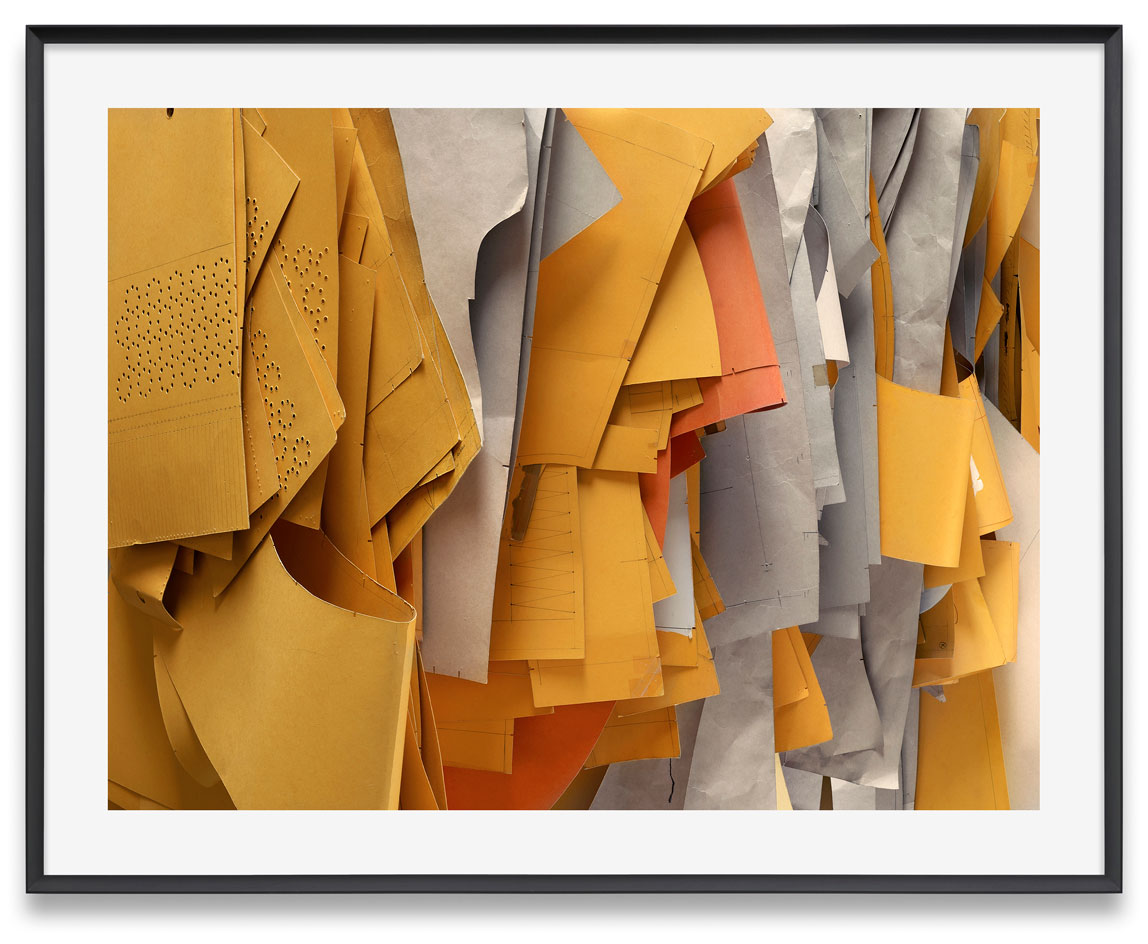
Thomas Demand, Towhee, 2020, framed pigment print.
The show also presents a selection from the latest iteration of his Model Studies. This marks a departure in the series, whereby the artist shoots models, but not of his own making. He’d previously approached the architectural models of architects John Lautner, SANAA and Hans Hollein, but here, he turns his attention to the atelier of late legendary fashion designer Azzedine Alaïa.
‘I was collecting images of tailoring workshops for many years, as the patterns always fascinated me formally. Now those patterns are like rulers, templates for making and perfecting a piece of clothing, translating a flat two-dimensional shape into a three-dimensional object, which doesn’t resemble any of those original shapes.’ Demand describes these as an arsenal of possibilities, and explored the coincidental potential of photography in this context. ‘I needed to catch the right moment to be there, like classic Cartier Bresson.’

Partridge, 2020, framed pigment print.
Intimate, spontaneous and suggestive of frenetic, electric activity, these images offer a rare insight into the everyday working practices of a fashion career that spanned half a century. ‘If you take a model from 1978, it will be made of a different material than from 1992, even if the shape and quality of the material is practically the same,’ says Demand. ‘I understood this as an enormously great finding because it would not be an archive in the classic sense of storing and withstanding time.’
For Demand, the model is the pattern; a sculptural object containing a wealth of history and narrative. ‘The shapes have a patina and biography, very different to my own models. These are like tools, not like stand-ins or representations. I consider these images my most abstract work to date – without losing figurativeness.’
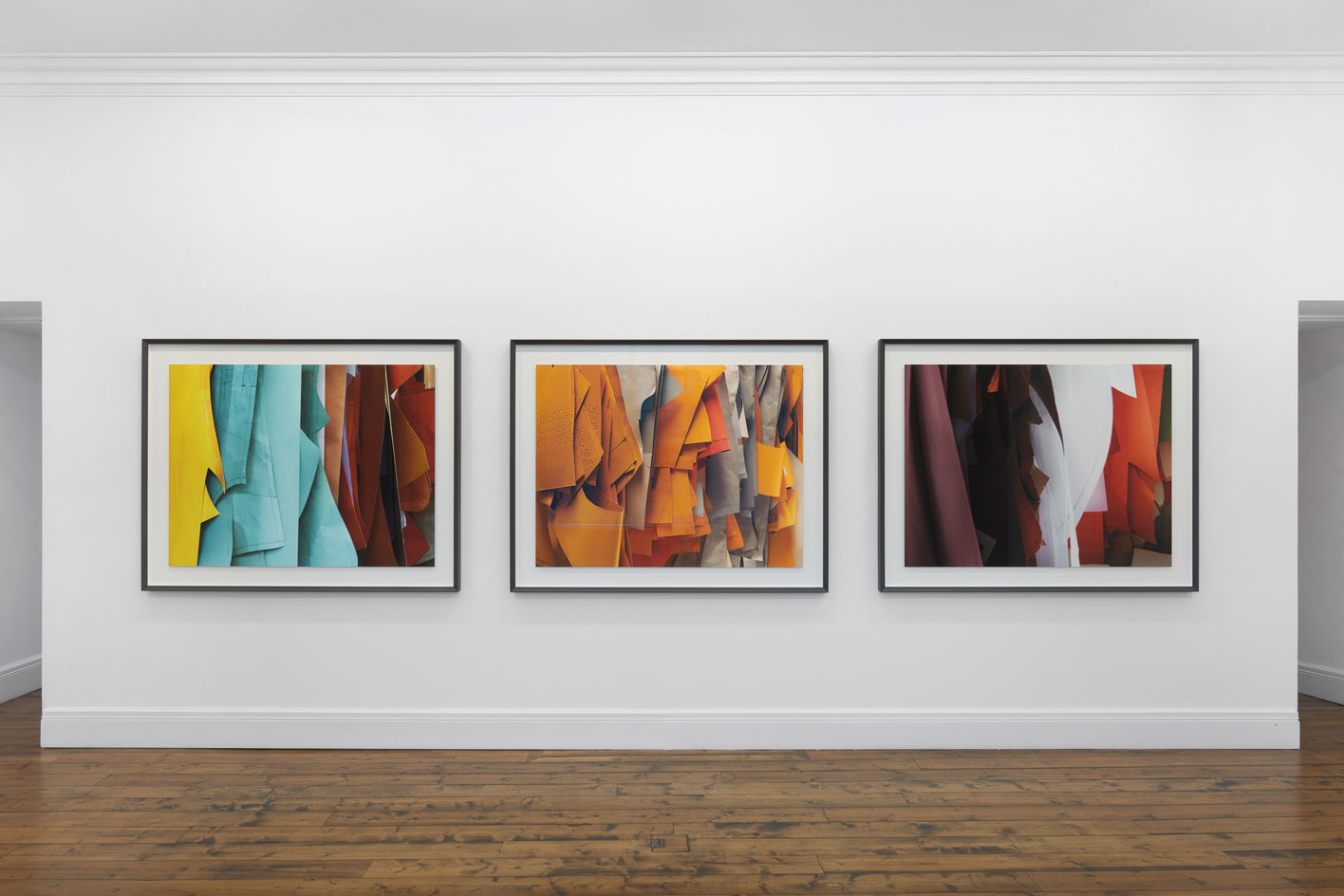
Installation view, Thomas Demand, Sprüth Magers, London, 2021. © Thomas Demand, VG Bild-Kunst, Bonn, 2021 Courtesy Sprüth Magers
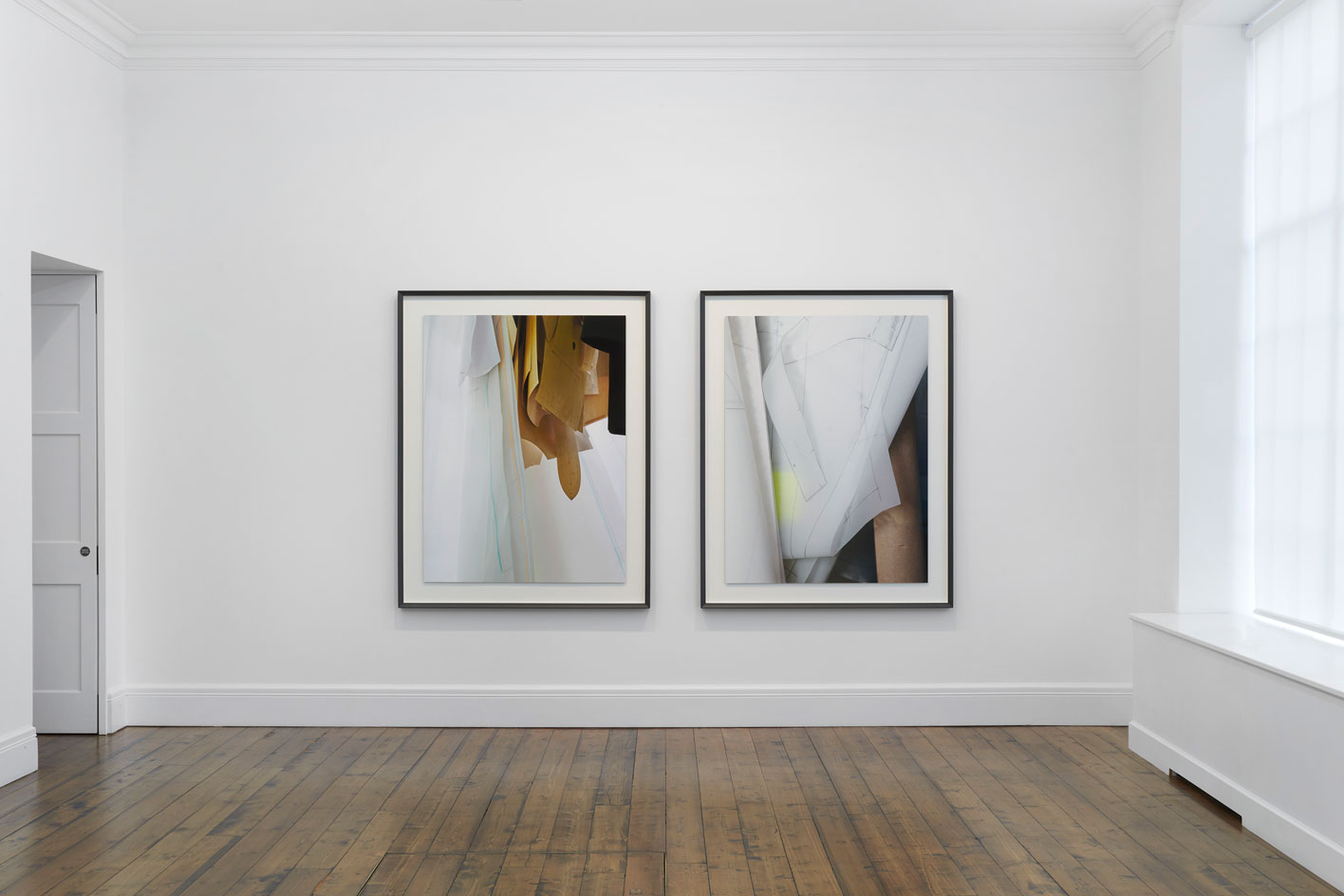
Installation view, Thomas Demand, Sprüth Magers, London, 2021. © Thomas Demand, VG Bild-Kunst, Bonn, 2021 Courtesy Sprüth Magers
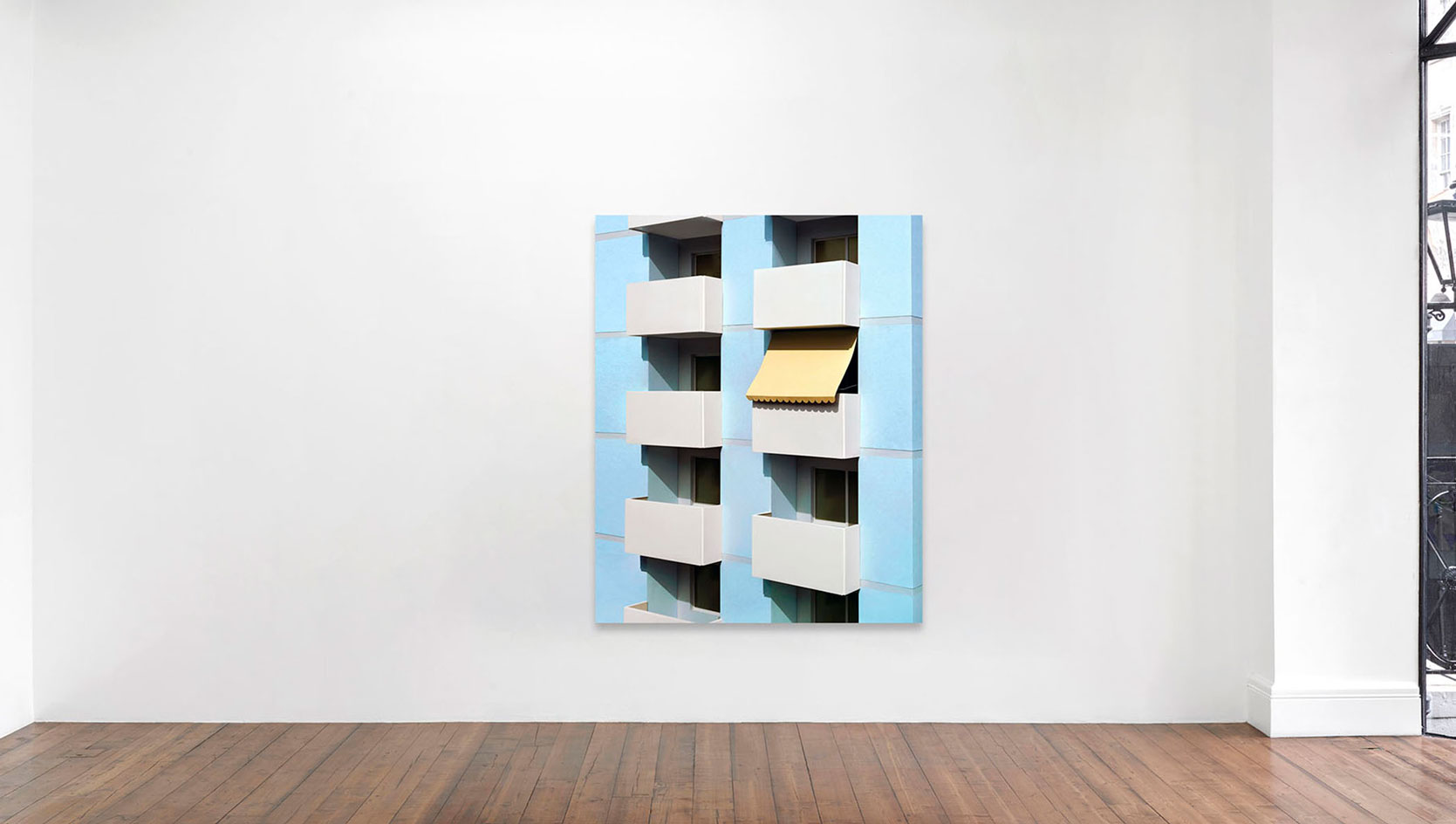
Installation view, Thomas Demand, Sprüth Magers, London, 2021. © Thomas Demand, VG Bild-Kunst, Bonn, 2021 Courtesy Sprüth Magers
INFORMATION
Thomas Demand, until 15 May, Sprüth Magers, London
spruethmagers.com
ADDRESS
Receive our daily digest of inspiration, escapism and design stories from around the world direct to your inbox.
7A Grafton St
London W1S 4EL
Harriet Lloyd-Smith was the Arts Editor of Wallpaper*, responsible for the art pages across digital and print, including profiles, exhibition reviews, and contemporary art collaborations. She started at Wallpaper* in 2017 and has written for leading contemporary art publications, auction houses and arts charities, and lectured on review writing and art journalism. When she’s not writing about art, she’s making her own.
-
 This cult Los Angeles pop-up restaurant now has a permanent address
This cult Los Angeles pop-up restaurant now has a permanent addressChef Brian Baik’s Corridor 109 makes its permanent debut in Melrose Hill. No surprise, it's now one of the hardest tables in town to book
-
 French bistro restaurant Maset channels the ease of the Mediterranean in London
French bistro restaurant Maset channels the ease of the Mediterranean in LondonThis Marylebone restaurant is shaped by the coastal flavours, materials and rhythms of southern France
-
 How ethical is Google Street View, asks Jon Rafman in Copenhagen
How ethical is Google Street View, asks Jon Rafman in CopenhagenIn 'Report a Concern - the Nine Eyes Archives' at Louisiana Museum of Art, Copenhagen, Jon Rafman considers technology's existential implications
-
 Out of office: The Wallpaper* editors’ picks of the week
Out of office: The Wallpaper* editors’ picks of the weekFar from slowing down for the festive season, the Wallpaper* team is in full swing, hopping from events to openings this week. Sometimes work can feel like play – and we also had time for some festive cocktails and cinematic releases
-
 The Barbican is undergoing a huge revamp. Here’s what we know
The Barbican is undergoing a huge revamp. Here’s what we knowThe Barbican Centre is set to close in June 2028 for a year as part of a huge restoration plan to future-proof the brutalist Grade II-listed site
-
 Out of office: The Wallpaper* editors’ picks of the week
Out of office: The Wallpaper* editors’ picks of the weekIt’s wet, windy and wintry and, this week, the Wallpaper* team craved moments of escape. We found it in memories of the Mediterranean, flavours of Mexico, and immersions in the worlds of music and art
-
 Each mundane object tells a story at Pace’s tribute to the everyday
Each mundane object tells a story at Pace’s tribute to the everydayIn a group exhibition, ‘Monument to the Unimportant’, artists give the seemingly insignificant – from discarded clothes to weeds in cracks – a longer look
-
 Out of office: The Wallpaper* editors’ picks of the week
Out of office: The Wallpaper* editors’ picks of the weekThis week, the Wallpaper* team had its finger on the pulse of architecture, interiors and fashion – while also scooping the latest on the Radiohead reunion and London’s buzziest pizza
-
 Out of office: The Wallpaper* editors’ picks of the week
Out of office: The Wallpaper* editors’ picks of the weekIt’s been a week of escapism: daydreams of Ghana sparked by lively local projects, glimpses of Tokyo on nostalgic film rolls, and a charming foray into the heart of Christmas as the festive season kicks off in earnest
-
 Wes Anderson at the Design Museum celebrates an obsessive attention to detail
Wes Anderson at the Design Museum celebrates an obsessive attention to detail‘Wes Anderson: The Archives’ pays tribute to the American film director’s career – expect props and puppets aplenty in this comprehensive London retrospective
-
 Meet Eva Helene Pade, the emerging artist redefining figurative painting
Meet Eva Helene Pade, the emerging artist redefining figurative paintingPade’s dreamlike figures in a crowd are currently on show at Thaddaeus Ropac London; she tells us about her need ‘to capture movements especially’